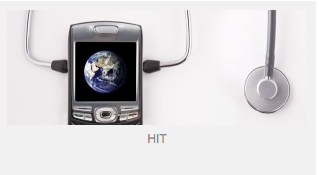The following post is part two of “Radiology IT Undergoing Radical Changes and Meaningful Use is Just the Beginning.” Part one provided a look at the shifting priorities of HealthIT to address Meaningful Use and how radiology IT will also need to adapt to these trends or risk being left behind.
The following post is part two of “Radiology IT Undergoing Radical Changes and Meaningful Use is Just the Beginning.” Part one provided a look at the shifting priorities of HealthIT to address Meaningful Use and how radiology IT will also need to adapt to these trends or risk being left behind.
The following paragraphs expand on the ideas presented in part one by diving into what Meaningful Use can mean for radiology IT and the changes that radiologists will have to make to appropriately address the ever-evolving trends.
Healthcare IT and Meaningful Use
This is where Meaningful Use sets the foundation to help address the issues radiology departments regularly face. If you consider the past, radiation exposure (and dose) capture may have been tracked but it remained within the confines of radiology – and most likely not documented as part of the patient history since few RIS or PACS solutions of the past provided capabilities to track this information, let alone the modalities ability to provide the output automatically. Today, radiology IT solutions may provide fields to track this information; but can they calculate patient dose based on individual modality output and site specified dose formulas? Probably not yet. Looking at the future, this must change. Radiology IT solutions must provide the ability to capture exposure output information from a given modality and calculate patient dose based on the site’s specific formulas. Once captured and calculated, a solution must be able to provide a cumulative view of a patient’s dose. Finally, this information must be passed to a health information exchange which will become part of a patient’s longitudinal and lifetime record and shared between health systems when patients move around. But first, as an industry, we must set standards for this to occur. Hence, this is where Meaningful Use steps in.
Standards are being set today, although in a controlled fashion over time. Dose standards need to be established. Once they do, capture and sharing must occur. Finally, decision support rules need to be established at both the local and national level to assist caregivers in determining the best outcomes for a patient regardless of where they are seeking treatment.
Meaningful Use is attempting to establish the framework for this to occur, hence the importance for the radiology community to embrace it and begin planning for its implementation. Stage 1 sets the stage for data capture; Stage 2 sets the stage for data sharing and access to information; and stage 3 and beyond focuses on decision support and outcomes. But to be truly effective, new technologies need to be developed to aid radiologists in this patient-centric shift as we move forward.
Better IT Equals Better Change
For radiology to succeed in this patient centric model a few things need to occur:
1) Radiologists need better collaboration tools from their IT vendors to communicate with referring physicians and patients. Report turn-around time is important but rapid communication will become of the stronger focus in the future. Radiologists need methods of their IT solutions to provide these collaborative tools so they can effectively communicate with patients as well as their referring physicians as rapidly as possible. Focus will shift to communication from today’s static diagnostic report – although, this will still be an important part of the overall record.
2) Business intelligence tools are a necessity. How can you manage a business going forward without real-time information? Providers need to understand how and why things are happening within their practice immediately. Compiling data and reviewing on a historical perspective causes business to operate in a reactive mode. Better business intelligence tools of the future will allow radiology practices to anticipate problems and take corrective action before they occur. Understanding your practice real-time allows you to ultimately provide better care, quicker – which ultimately improves outcomes and in this changing environment, your profitability.
3) Access to information is key. As a radiologist, one can no longer focus on patient symptoms but must focus on the patient. To do this, radiology IT needs to be more connected to have access to more information. More importantly, alerts from decision support tools can assist radiologists to consider conditions in a patient’s record that they may never have considered or had access to in the past. Access to patient information and moving beyond patient symptoms may alter patient treatment protocols, which will ultimately affect patient outcomes.
As radiology moves to this patient centric model, practices must analyze their workflow, policies and procedures, and business operations (hence the need for the business intelligence tools) and make adjustments today to allow them to remain profitable and successful in the future, all the while improving overall patient care.
The Future Is Now
“Health IT: Right Time: Right Place: It’s On”. HIMSS 2013 is just around the corner and the focus is clear. We are experiencing an evolution in healthcare IT today and we must all embrace for change. As you consider your strategy moving forward, continue to challenge your vendors and their solutions to assure you they are keeping pace with the trends facing healthcare. Meaningful Use is a catalyst driving this change and vendors like Carestream are uniquely positioned to offer organizations solutions that will embrace these changes; offering solutions to real problems you are facing today and will face in the future, not one-off departmentalized “products” that will limit your organization as you adapt your enterprise imaging strategy for the future.
![]()








